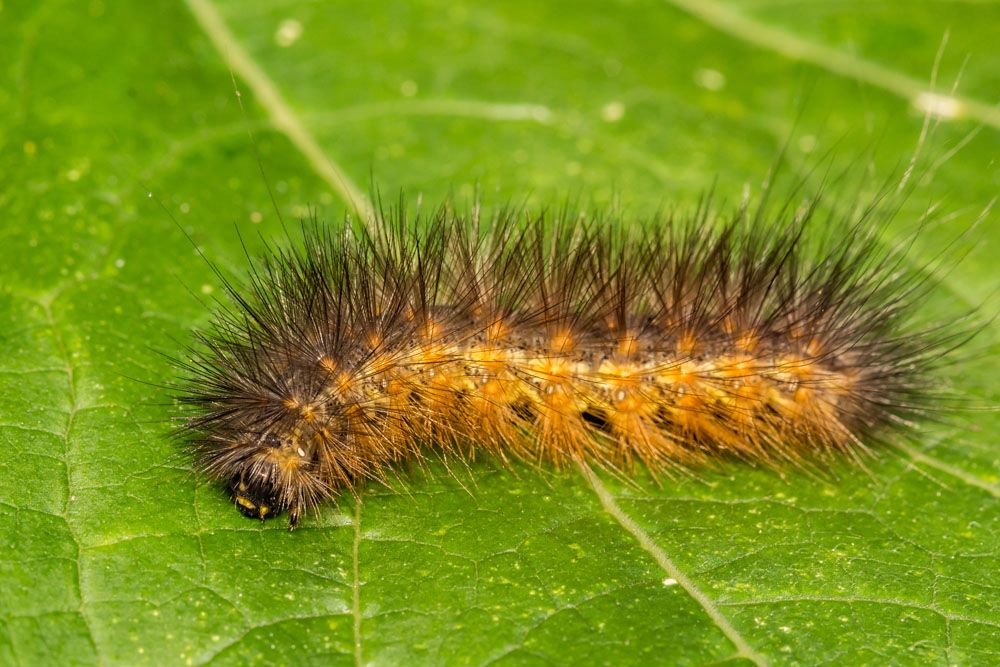
Saltmarsh Caterpillar – Areca Moth – Estigmene acrea
Saltmarsh Caterpillar – Areca Moth – Estigmene acrea
Common Name: Saltmarsh Caterpillar or Areca Moth
Latin Name: Estigmene acrea
Appearance:
The Saltmarsh Caterpillar is easily identified. The adult caterpillar is multicoloured, with a black head and a body covered in long, hair-like setae. The body color ranges from pale yellow to dark brown or black, with conspicuous black markings along the sides. There are also tufts of longer black hairs around the body, giving it a fuzzy or woolly look.
Host Plant:
The Saltmarsh Caterpillar eats a lot of different plants, both food and weeds. Soybeans, cotton, clover, sunflowers, and different kinds of grass are all common host plants.
Territory:
The Saltmarsh Caterpillar lives in many different types of environments in Argentina and Chile. Because it is flexible, it can do well in parks, pastures, farms, and other open spaces where host plants grow.
Damages caused by:
While the Saltmarsh Caterpillar may eat crops and defoliate them, it is not considered a severe agricultural problem. High numbers of these caterpillars can cause visible crop damage in some circumstances, although their influence is normally confined and does not cause widespread devastation.
Life History and Habitat:
Life Cycle:
The Saltmarsh Caterpillar goes through a complete metamorphosis, with egg, larval, pupal, and adult phases.
- Eggs:Adult moths deposit eggs on host plant leaves.
- Larva:The caterpillar emerges from the egg and grows through multiple instars, eating on the leaves of its host plant.
- Pupa:The caterpillar pupates in a cocoon that is either on or near the ground.
- Adult:After emerging from the pupa, the cycle continues.
